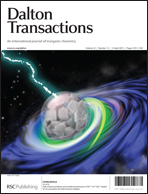In situ synthesis of Zn2GeO4 hollow spheres and their enhanced photocatalytic activity for the degradation of antibiotic metronidazole
Abstract
In this study, Zn2GeO4 hollow spheres were successfully fabricated by a template-engaged approach using zinc hydroxide carbonate (Zn4CO3(OH)6·H2O, ZHC) spheres as the template. During the hydrothermal process, Zn2+ dissolved from the surface of the ZHC spheres could rapidly react with the HGeO3− in solution and the Zn2GeO4 outer shell was formed in situ. Moreover, the building units of the Zn2GeO4 hollow spheres could gradually transform from the nanoparticles into nanobundles with the increase of the reaction time. The photocatalytic degradation results indicate that the Zn2GeO4 hollow spheres exhibited high photocatalytic activity and excellent stability for the degradation of antibiotic metronidazole in solution. Finally, the radical species involved in the degradation process have been investigated by using the scavenger experiments.


 Please wait while we load your content...
Please wait while we load your content...